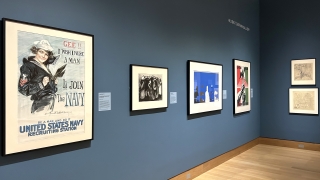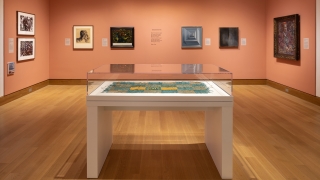Exhibitions Archive
Legacies of Queer Indigenous Liberation
Love as CeremonyLove as Ceremony: Legacies of Two-Spirit Liberation highlights the work of contemporary North American “Two-Spirit” artists, exploring the ways in which two-spirit communities reclaim ancestral knowledge and imagine possible futures. The exhibition focuses on expressions of joy, love, and liberation in an effort to both resist and dispel Western colonial characterizations of queerness which have historically perpetuated narratives of taboo and voyeurism.
A Space for Dialogue is a student-curated exhibition program that began in 2001. Hood Museum of Art interns create an installation drawn from the museum's permanent collection by engaging with every aspect of curation, from doing research and selecting objects, to choosing frames and a wall color, to planning a layout and writing labels and a brochure, to giving a public talk. There have been over 100 A Space for Dialogue exhibitions on a wide variety of themes.
Windows in Art
On ViewOn View, a thematic exploration of windows in art, is organized around three central themes: a view into the private world, a view into the public world, and the abstraction of the window itself. Featuring works by twentieth and twenty-first century American artists, the exhibition invites you not only to consider what lies beyond the window, but also how its framing influences our perception.
A Space for Dialogue is a student-curated exhibition program that began in 2001. Hood Museum of Art interns create an installation drawn from the museum's permanent collection by engaging with every aspect of curation, from doing research and selecting objects, to choosing frames and a wall color, to planning a layout and writing labels and a brochure, to giving a public talk. There have been over 100 A Space for Dialogue exhibitions on a wide variety of themes.
The works of Mika Rottenberg and Luis Gispert use a heightened sense of reality to explore ideas of class, gender, and identity. Surrealist at times, their photography and video installations are both filled with exuberant iconography and highly choreographed––every element is carefully orchestrated, from the extravagant outfits to the upscale mise-en-scène and the subjects’ aggressive and theatrical gestures. Their works draw from Social Surrealism, a movement which borrows from European surrealist techniques of the 1920s and 30s to provide social commentary and criticism. The surrealist art movement of the early twentieth century challenged the status-quo and explored new understandings of the unconscious. The rise of revolutionary thinking and liberation of the mind and artistic expression also turned to social and political activism. Rottenberg and Gispert explore similar ideas through the lens of the Latinx experience of contemporary capitalism.
A Space for Dialogue is a student-curated exhibition program that began in 2001. Hood Museum of Art interns create an installation drawn from the museum's permanent collection by engaging with every aspect of curation, from doing research and selecting objects, to choosing frames and a wall color, to planning a layout and writing labels and a brochure, to giving a public talk. There have been over 100 A Space for Dialogue exhibitions on a wide variety of themes.
Forming Body and Identity
Taking Up SpaceThe formation of identity is a continuous and fluid reshaping of the self. Through the works of various contemporary American artists, Taking Up Space explores the physical and emotional relationships they have with their bodies, and the ways in which public expression of identity shapes lived experience.
A Space for Dialogue is a student-curated exhibition program that began in 2001. Hood Museum of Art interns create an installation drawn from the museum's permanent collection by engaging with every aspect of curation, from doing research and selecting objects, to choosing frames and a wall color, to planning a layout and writing labels and a brochure, to giving a public talk. There have been over 100 A Space for Dialogue exhibitions on a wide variety of themes.
Who is the ideal soldier? This exhibition explores how artists have constructed the image of the perfect service member, with an emphasis on Mexico and the United States in the first half of the twentieth century. During this period, artists manufactured the soldier figure with a certain gender, sexual orientation, and patriotic outlook. Ultimately, this exhibition invites visitors to consider how our societal conception of the ideal soldier has, or has not, changed over the past one hundred years.
A Space for Dialogue is a student-curated exhibition program that began in 2001. Hood Museum of Art interns create an installation drawn from the museum's permanent collection by engaging with every aspect of curation, from doing research and selecting objects, to choosing frames and a wall color, to planning a layout and writing labels and a brochure, to giving a public talk. There have been over 100 A Space for Dialogue exhibitions on a wide variety of themes.
Nothing Gold Can Stay explores the universal yet nuanced human experience of grief. The disparate works in this exhibition showcase the range of emotions undergone while grieving, from sadness and confusion to celebration and fondness. They also explore various types of grief, ranging from personal loss to collective trauma. The exhibition underscores how differently we grieve while emphasizing the various ways loss connects us all.
A Space for Dialogue is a student-curated exhibition program that began in 2001. Hood Museum of Art interns create an installation drawn from the museum’s permanent collection by engaging with every aspect of curation, from doing research and selecting objects, to choosing frames and a wall color, to planning a layout and writing labels and a brochure, to giving a public talk. There have been over 100 A Space for Dialogue exhibitions on a wide variety of themes.
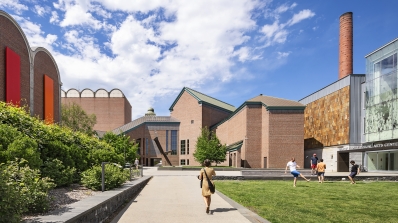
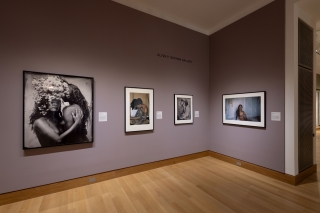
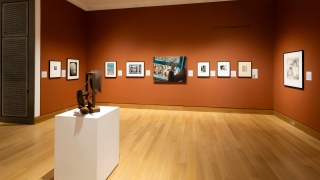
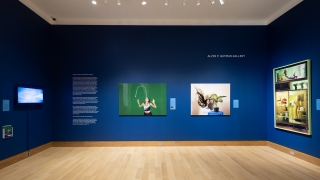
![Daniel A. Heyman, Untitled [Vincent], from the Tattoo Series, 2002, chine collé etching on cotton paper. Hood Museum of Art, Dartmouth; Gift of Vincent Renou; 2005.32.7. © Daniel A. Heyman A work on paper of a reclining male nude. The color palette is mostly warm browns and the figure of the reclining nude male's skin looks marbled.](https://hoodmuseum.dartmouth.edu/sites/hoodmuseum.prod/files/styles/max_320/public/hoodmuseum/images/exhibition_images/inside_left_daniel_heyman.jpg?itok=MWAHjabE)
